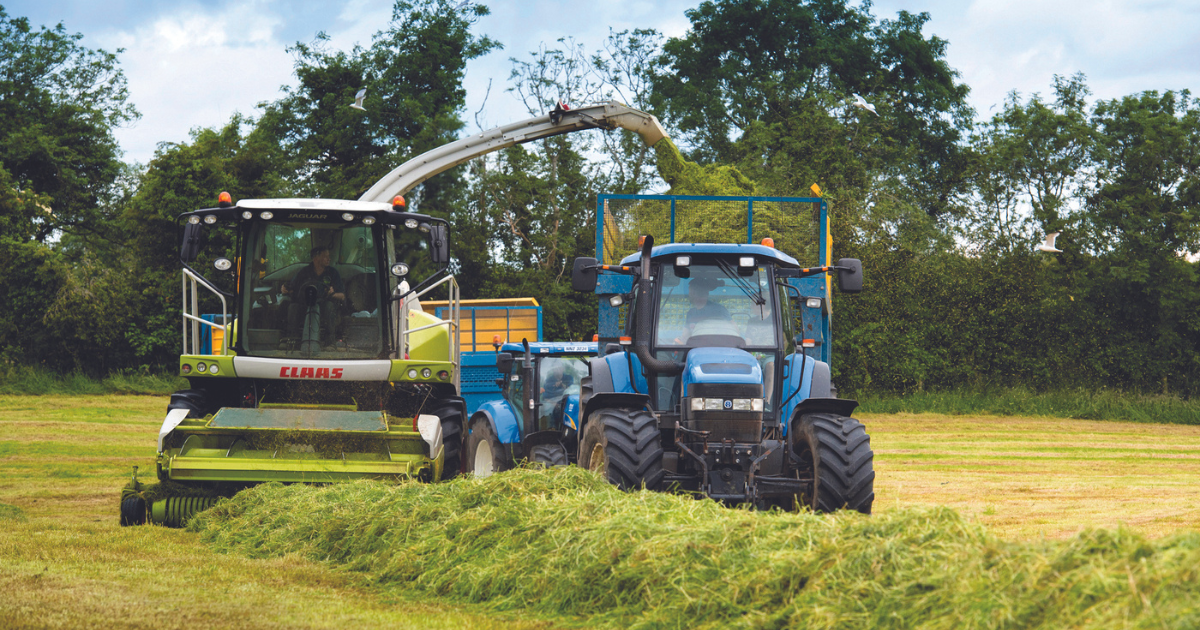
Making better quality grass silage

Graham Ragg, Mole Valley Farmers Senior Agronomist & Product Manager
Making enough quality silage does not happen by accident. It takes considerable planning, investment and good management over many years. Having quality silage will give better animal health and dry matter intake for higher performance and profitability.
Firstly, you need to know how much silage you will need. To work out your target quantity you need to know the amount of livestock you are going to overwinter next year, the split of age groups and how many tonnes of silage each will need.
When you know your forage requirement it can be achieved by growing grass silage, maize, wholecrop or fodder beet. Once you have decided on the quantity of grass silage you then have to decide on your target dry matter level, Metabolisable Energy (ME), digestibility (D-value) and crude protein targets.
For dairy cattle, target dry matter levels are normally around 28 to 32%, Metabolisable Energy above 11.5 and crude protein around 17 to 18%.
Dry cows, beef cattle and sucklers may have lower nutritional targets. To minimise dry matter and nutritional losses you need a quick and stable fermentation from field to feeding, which is vital on all systems and livestock categories.
On a lot of UK dairy units, when maximising milk from forage a target of 4,500 litres is a key performance indicator. Better liveweight gains for sheep and beef are also helped by better quality silages with greater intake potentials.
Planning and investment
Soil improvement and nutrient planning are key to producing better grass. Nutrient and pH levels need to be corrected for any deficiencies before reseeding with our quality Premier Cutting Ley mixture. Once the sward has been successfully established, the correct balance of slurry and bagged fertiliser needs to be applied to maximise yield and quality.
This is particularly true for first cut silage, which is normally the highest yielding and best quality. Maximising first cut acres is vital. Grazing land needs to be looked after well and stocked tightly at turnout.
Farmers vary in the number of silage cuts they make in a year, normally between one and five cuts. Generally, yields and quality decline as the yield progresses but with good management, quality silage can be grown all through the growing season.
Cut at the right growth stage
Once you have successfully grown a good crop of grass you are about half way to getting quality silage. The next step is to cut at the right time for your ME and crude protein targets.
Once grasses have flowered or gone to head they lose 0.6ME and 3.5% crude protein in one week. So, it is vital to have targeted cutting dates, prepare the clamp and keep in touch with your contractor.


The table above shows the differences in crude protein from over 2,000 silage analyses. The higher D-value silage would give over two litres per cow per head, higher yields and savings on bought in proteins.
Don’t sacrifice quality for bulk
Leaving silage to ‘bulk up’ is not a good solution on dairy units who are looking to maximise quality of silage. It is key to put your fertiliser and slurry on early enough to avoid excess free nitrates in the grass at cutting time.
Grass sugar levels are affected by the variety, wilting and mowing times, which are all important factors in maximising nutrient production and intakes from grass.










